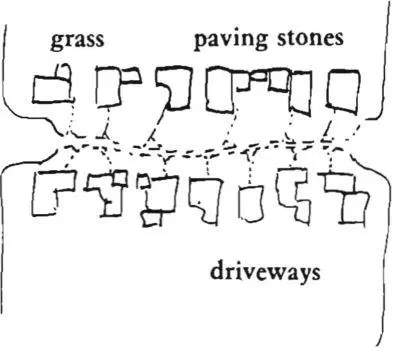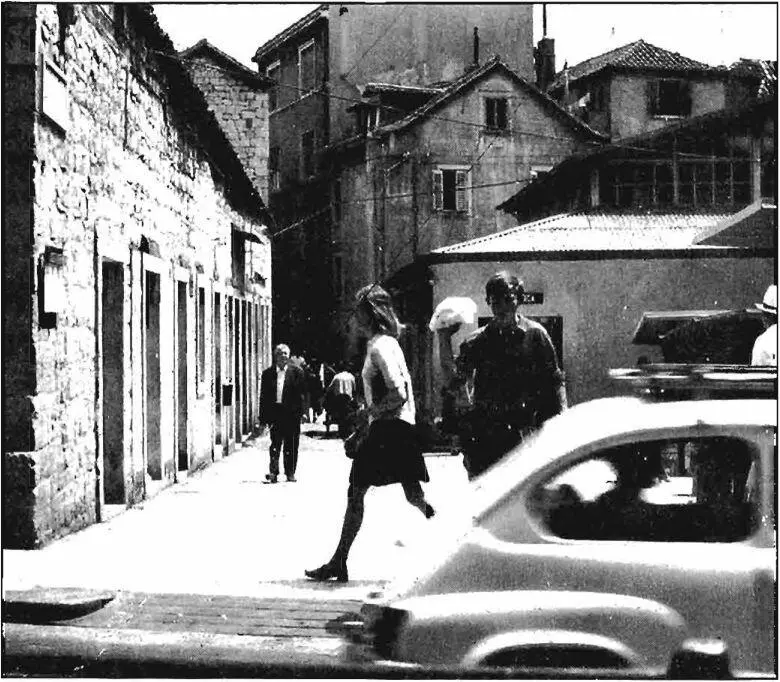Christopher alexander - A pattern language
Здесь есть возможность читать онлайн «Christopher alexander - A pattern language» весь текст электронной книги совершенно бесплатно (целиком полную версию без сокращений). В некоторых случаях можно слушать аудио, скачать через торрент в формате fb2 и присутствует краткое содержание. Жанр: Прочая научная литература, на английском языке. Описание произведения, (предисловие) а так же отзывы посетителей доступны на портале библиотеки ЛибКат.
- Название:A pattern language
- Автор:
- Жанр:
- Год:неизвестен
- ISBN:нет данных
- Рейтинг книги:3 / 5. Голосов: 1
-
Избранное:Добавить в избранное
- Отзывы:
-
Ваша оценка:
- 60
- 1
- 2
- 3
- 4
- 5
A pattern language: краткое содержание, описание и аннотация
Предлагаем к чтению аннотацию, описание, краткое содержание или предисловие (зависит от того, что написал сам автор книги «A pattern language»). Если вы не нашли необходимую информацию о книге — напишите в комментариях, мы постараемся отыскать её.
A pattern language — читать онлайн бесплатно полную книгу (весь текст) целиком
Ниже представлен текст книги, разбитый по страницам. Система сохранения места последней прочитанной страницы, позволяет с удобством читать онлайн бесплатно книгу «A pattern language», без необходимости каждый раз заново искать на чём Вы остановились. Поставьте закладку, и сможете в любой момент перейти на страницу, на которой закончили чтение.
Интервал:
Закладка:
In a typical low density American suburb, more than 50 percent of the land is covered with concrete or asphalt paving. In some areas, like downtown Los Angeles, it is more than 65 per cent.
This concrete and asphalt have a terrible effect on the local environment. They destroy the microclimate; they do nothing useful with the solar energy that falls on them; they are unpleasant to walk on; there is nowhere to sit; nowhere for children to play; the natural drainage of the ground is devastated; animals and plants can hardly survive.
The fact is that asphalt and concrete are only suitable for use on high speed roads. They are unsuitable, and quite unnecessary, on local roads, where a few cars are moving in and out. When local roads are paved, wide and smooth, like major roads, drivers are encouraged to travel past our houses at 35 or 40 miles per hour. What is needed, instead, on local roads is a grassy surface that is adapted to the primary uses of the common land between the buildings, with just enough hard paving to cope with the few cars that do go on it.
The best solution is a field of grass, with paving stones set into it. This arrangement provides for animals and children and makes the street a focal point for the neighborhood. On hot summer
days the air over the grass surface is 10 to 14 degrees cooler than the air over an asphalt road. And the cars are woven into this scheme, but they do not dominate it.
 |
| Paving stones. |
Of course, such a scheme raises immediately the question of parking. How shall it be organized? It is possible to arrange for parking on green streets, so Jong as it is parking for residents and their guests, only. When overflow parking from shopping streets and work communities sprawls onto streets that were intended to be quiet neighborhoods, the character of the neighborhood is drastically altered. The residents generally resent this situation. Often it means they cannot park in front of their own homes. The neighborhood becomes a parking lot for strangers who care nothing about it, who simply store their cars there.
The green street will only work if it is based on the principle that the street need not, and should not, provide for more parking than its people need. Parking for visitors can be in small parking lots at the ends of the street; parking for people in the individual houses and workshops can either be in the same parking lots or in the driveways of the buildings.
This does not imply that commercial activities, shops, and businesses should be excluded from residential areas. In fact, as we have said in scattered work(9), it is extremely important to build such functions into neighborhoods. The point is, however, that businesses cannot assume when they move into a neighborhood that they have the right to a huge amount of free parking. They must pay for their parking; and they must pay for it in a way which is consistent with the environmental needs of the neighborhood.
Therefore:
 |
| •5* |
On local roads, closed to through traffic, plant grass all over the road and set occasional paving stones into the grass to form a surface for the wheels of those cars that need access to the street. Make no distinction between street and sidewalk. Where houses open off the street, put in more paving stones or gravel to let cars turn onto their own land.
* *
When a road is a green street, it is so pleasant that it naturally tends to attract activity to it. In this case, the paths and the green street are one— common land(67). However, even when the street is green, it may be pleasant to put in occasional very small lanes, a few feet wide, at right angles to the green streets, according to network of paths and cars(52). In order to preserve the greenness of the street, it will be essential, too, to keep parked cars in driveways on the individual lots, or in tiny parking lots, at the ends of the street, reserved for the house owners and their visitors— small parking lots(103). Fruit trees and flowers will make the street more beautiful— fruit trees(170), raised flowers(245)—and the paving stones which form the beds for cars to drive on, can themselves be laid with cracks between them and with grass and moss and flowers in the cracks between the stones— paving with cracks between the stones(247). . . .
52 NETWORK OF PATHS AND CARS**

270
. . . roads may be governed by parallel roads(23), looped
LOCAL ROADS(49)3 GREEN STREETS(5 I ) ; major paths by ACTIVITY NODES(30), PROMENADE( 3 I ) ,and PATHS AND GOALS( I 20) . This pattern governs the interaction between the two.
4* *»•
Cars are dangerous to pedestrians; yet activities occur just where cars and pedestrians meet.
It is common planning practice to separate pedestrians and cars. This makes pedestrian areas more human and safer. However, this practice fails to take account of the fact that cars and pedestrians also need each other: and that, in fact, a great deal of urban life occurs at just the point where these two systems meet. Many of the greatest places in cities, Piccadilly Circus, Times Square, the Champs Elysees, are alive because they are at places where pedestrians and vehicles meet. New towns like Cumbernauld, in Scotland, where there is total separation between the two, seldom have the same sort of liveliness.
The same thing is true at the local residental scale. A great deal of everyday social life occurs where cars and pedestrians meet. In Lima, for example, the car is used as an extension of the house: men, especially, often sit in parked cars, near their houses, drinking beer and talking. And in one way or another, something like this happens everywhere. Conversation and discussion grow naturally around the lots where people wash their cars. Vendors set themselves up where cars and pedestrians meet; they need all the traffic they can get. Children play in parking
 |
| Children like cars. |
TOWNS
lots—perhaps because they sense that this is the main point of arrival and departure; and of course because they like the cars. Yet, at the same time, it is essential to keep pedestrians separate from vehicles: to protect children and old people; to preserve the tranquility of pedestrian life.
To resolve the conflict, it is necessary to find an arrangement of pedestrian paths and roads, so that the two are separate, but meet frequently, with the points where they meet recognized as focal points. In general, this requires two orthogonal networks, one for roads, one for paths, each connected and continuous, crossing at frequent intervals (our observations suggest that most points on the path network should be within I 50 feet of the nearest road), meeting, when they meet, at right angles.
Читать дальшеИнтервал:
Закладка:
Похожие книги на «A pattern language»
Представляем Вашему вниманию похожие книги на «A pattern language» списком для выбора. Мы отобрали схожую по названию и смыслу литературу в надежде предоставить читателям больше вариантов отыскать новые, интересные, ещё непрочитанные произведения.
Обсуждение, отзывы о книге «A pattern language» и просто собственные мнения читателей. Оставьте ваши комментарии, напишите, что Вы думаете о произведении, его смысле или главных героях. Укажите что конкретно понравилось, а что нет, и почему Вы так считаете.












